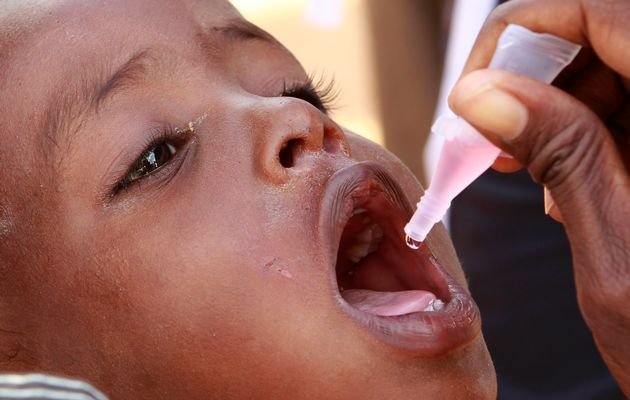
Polio outbreak update#
The most recent detection of the previously described NIE-KGS-1 emergence was through environmental surveillance in January 2020 ( 1, 3).ĭuring July–September 2019, the NIE-SOS-7 emergence was detected through environmental surveillance in Nigeria circulation was confirmed after the previous global update ( 3). Since first detected, genetically linked virus has circulated in 17 west and central African countries, from Mauritania to Cameroon during the reporting period circulation was documented in 16 of the 17 countries (excluding Cameroon) resulting in 310 cases of cVDPV2 in 14 countries and detection through environmental surveillance in 13 countries ( 1, 3). The previously described cVDPV2 emergence (NIE-JIS-1) ( 1, 3), first detected in Nigeria in 2018, continued to circulate during the reporting period. No polioviruses genetically linked to two previously described emergences (CHN-XIN-1 and ZAM-LUA-1) have been detected since 2019 ( 1, 3). During the reporting period, fifteen (58%) of the 26 emergences in active transmission in African countries were detected, either in AFP patients or through environmental surveillance, outside of the country of first isolation of genetically linked virus ( Figure 2). Nineteen (50%) of the 38 emergences were previously detected during 2017–2019, three (8%) (ETH-ORO-4, ETH-SOU-2, and NIE-SOS-7) were newly detected in 2019 but were confirmed after the last global report, and 16 (42%) were newly detected during 2020–2021 ( 1, 3). A goal of the Global Polio Eradication Initiative’s (GPEI) 2022–2026 Strategic Plan is to better address the challenges to early CVDPV2 outbreak detection and initiate prompt and high coverage outbreak responses with available type 2 OPV to interrupt transmission by the end of 2023 ( 8).ĭuring January 2020–June 2021, there were 38 cVDPV2 emergences in active transmission in 34 countries 28 (82%) of these countries are in Africa (Table) (Figure 1). The number of cVDPV2 cases increased from 366 in 2019 to 1,078 in 2020 ( 7). During this period, there were 44 cVDPV outbreaks of the three serotypes affecting 37 countries.

This report updates that of July 2019–February 2020 to describe global cVDPV outbreaks during January 2020–June 2021 (as of November 9, 2021) † ( 3). In October 2021, the Strategic Advisory Group of Experts on Immunization (WHO’s principal advisory group) permitted wider use of nOPV2 however, current nOPV2 supply is limited ( 6).

In November 2020, the World Health Organization (WHO) Emergency Use Listing procedure authorized limited use of type 2 novel OPV (nOPV2), a vaccine modified to be more genetically stable than the Sabin strain, for cVDPV2 outbreak response ( 3, 5). Since the switch, monovalent OPV type 2 (mOPV2, containing Sabin strain type 2) has been used for response to cVDPV type 2 (cVDPV2) outbreaks tOPV is used if cVDPV2 co-circulates with WPV type 1, and bOPV is used for cVDPV type 1 (cVDPV1) or type 3 (cVDPV3) outbreaks ( 1– 4). Circulating vaccine-derived poliovirus (cVDPV) outbreaks* occur when transmission of Sabin strain poliovirus is prolonged in underimmunized populations, allowing viral genetic reversion to neurovirulence, resulting in cases of paralytic polio ( 1– 3). As of May 1, 2016, use of oral poliovirus vaccine (OPV) type 2 for routine and supplementary immunization activities ceased after a synchronized global switch from trivalent OPV (tOPV containing Sabin strain types 1, 2, and 3) to bivalent OPV (bOPV containing Sabin strain types 1 and 3) subsequent to the certified eradication of wild type poliovirus (WPV) type 2 in 2015 ( 1– 3).


 0 kommentar(er)
0 kommentar(er)
